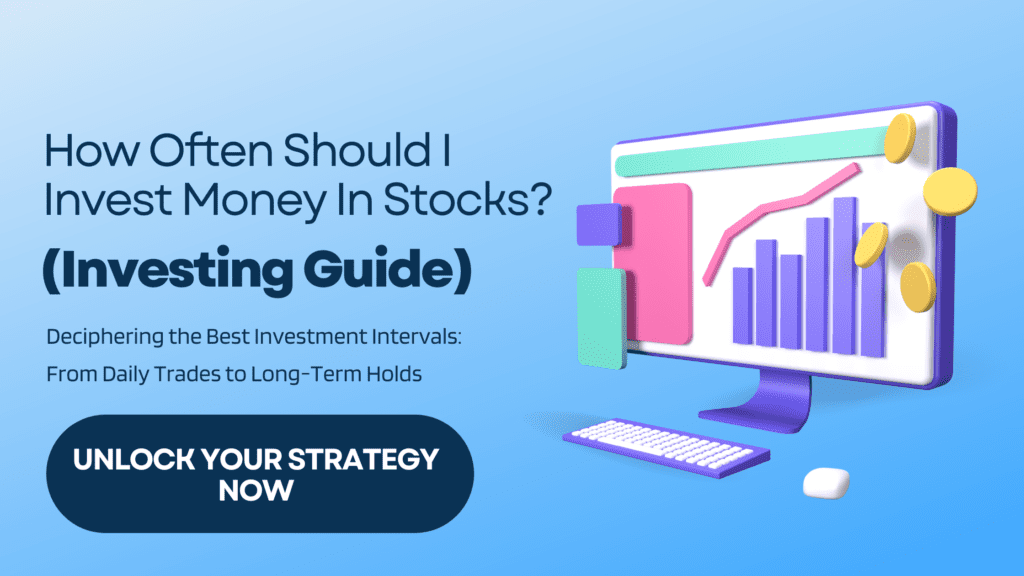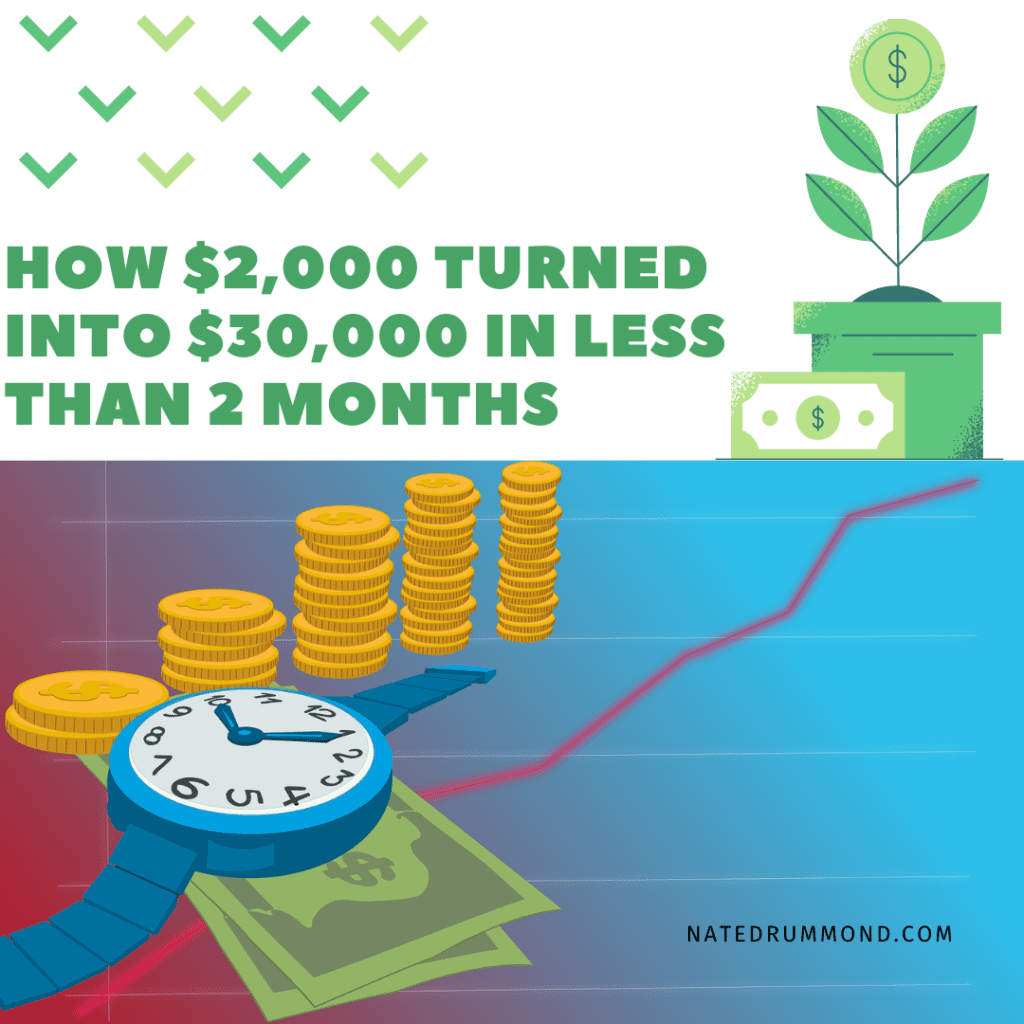The Journey from Day Trading to Strategic Investing
I’ll never forget my first foray into the stock market.
Armed with enthusiasm and a sense of adventure, I dived headfirst into the world of day trading, believing I could ride the market’s waves to quick riches.
Little did I realize that without the proprietary tools, resources and financial products that major financial institutions wield, I was somewhat sailing in turbulent waters with a makeshift raft. It struck me hard when I learned that even these mammoth financial institutions, with their teams of analysts and state-of-the-art software, often struggle to consistently outperform the market.
If they faced challenges, what chance did I, a solo day trader, have?
That initial experience was humbling and drove home a significant lesson.
Investing in the stock market isn’t about quick gains or timing the perfect entry and exit points.
Instead, it’s about understanding the rhythm of the market, setting clear financial goals, and formulating strategies that prioritize time spent in the market over trying to time it perfectly.
For new investors entering the fray, it’s crucial to comprehend the nuances and intricacies of the stock market.
The age-old adage “It’s not about timing the market, but time in the market” rings true more than ever.
This guide aims to shed light on the importance of knowing when and how often to invest, steering clear of the pitfalls I once stumbled into and setting you on a path to achieving your financial goals.
Understanding Investment Strategies
Navigating the stock market’s ebb and flow requires more than just a keen eye. It demands a strategy, a roadmap guiding your investment journey.
By understanding the various strategies out there, investors can make more informed decisions and tailor their approach to best meet their financial objectives.
Let’s delve into some of the most popular strategies and weigh their pros and cons.
The Concept of Dollar-Cost Averaging
When we talk about strategies that provide a buffer against the emotional upheavals of investing, one stands out prominently: dollar-cost averaging (DCA).
If you’ve browsed around my blog, you might have chanced upon an entire post dedicated to this topic: Dollar Cost Averaging: The Ultimate Strategy For Successful Investing.
But for those who haven’t yet dived into that treasure trove, what exactly is dollar-cost averaging?
DCA is not just a strategy, it’s a discipline. At its essence, it involves consistently investing a fixed sum into the stock market on a regular basis, be it monthly, quarterly, or any other timeframe.
Regardless of the market’s highs and lows, this commitment remains unwavering.
Why does this method resonate with so many, especially beginners? The underlying principle is simple.
By allocating funds periodically, you end up purchasing more shares when prices are in a slump and fewer when they’re soaring. This not only mitigates the risks associated with market volatility but over time, can lead to a more favorable average purchase price than if you went all-in during a single market condition.
The post I wrote elucidates this with a compelling example:
Imagine having $10,000. If you invested it all at once in a $100-per-share stock and it dips to $90 the next day, you’re instantly at a loss.
But, by breaking that investment into smaller, regular chunks, you safeguard against these abrupt market movements, leading to a more stable average cost.
Now, one might wonder – isn’t it more profitable to just predict the market’s highs and lows?
In a utopian world, maybe. But in reality, timing the market is a game of risk that even the most experienced players can’t always win.
As I often reiterate, and as supported in my detailed post, time in the market trumps timing the market. This principle of DCA allows investors to be present in the market’s long-term growth journey while eliminating the stress and often detrimental impacts of trying to predict its next move.
To give you a more personal touch, and to demonstrate that I’m not just talking the talk: I’ve woven the dollar-cost averaging strategy with my own ETF investments. I have a strict investing schedule I stick to and It offers the peace of mind and discipline that, especially for those new to the realm of investing or those who lean on the side of caution, is invaluable.
Remember, the stock market, with all its unpredictability, shouldn’t deter your investment journey.
With strategies like DCA, you’re equipped to navigate its tumultuous waters, focusing instead on the horizon of long-term growth. And if you’re hungry for a deeper dive into DCA, don’t hesitate to check out my dedicated post on the subject.
Lump Sum vs. Periodic Investing
Another pressing question that often confronts investors is whether to invest a lump sum or spread their investments over time. Both approaches have their merits.
Investing a lump sum can be enticing, especially when you have a considerable amount at your disposal and the market conditions seem favorable.
This strategy can yield significant returns if the market trends upward post your investment. However, it also poses risks.
If you invest that much money and the market takes a downturn shortly after, your investment’s value could diminish rapidly.
On the other hand, periodic investing, akin to dollar-cost averaging, allows long-term investors to reduce immediate market risks.
By consistently injecting money into your chosen investment strategy, you can benefit from the market’s ups and downs over time, leading to potential long-term investment growth.
Market Timing and Its Pitfalls
The allure of market timing is strong. It revolves around the idea of buying stocks at their lowest prices and selling at their peak.
In theory, it sounds fantastic. In practice, it’s akin to walking on a tightrope.
Even seasoned investors can fall prey to knee-jerk reactions prompted by sudden market changes, leading to hasty decisions that might not always yield positive results.
Predicting stock prices and their fluctuations is a complex endeavor, and more often than not, attempts at market timing result in negative results.
Furthermore, there’s a psychological aspect to consider. The stress and anxiety associated with trying to time the market perfectly can be overwhelming, leading investors to make decisions clouded by emotion rather than rational analysis.
Exploring Different Investment Avenues
Now that we’ve demystified some common investment strategies, it’s essential to consider where you’re placing your money.
The world of investment offers a smorgasbord of options, each with its unique blend of risks and rewards. By exploring various avenues, you and I can make informed choices, ensuring our money works efficiently for our goals.
Let’s journey through some prevalent investment vehicles.
Mutual Funds and Their Role
Have you ever wished to invest in a collection of stocks or bonds but felt overwhelmed by the choices?
Enter mutual funds. These are essentially pools of funds collected from many investors like you and me to invest in securities such as stocks, bonds, and other assets.
The primary allure of mutual funds is their ability to diversify. Instead of putting all your eggs in one basket, your money gets spread across a range of assets, managed by professional financial advisors.
This diversification can offer more stability in the long term, especially when some sectors or assets underperform.
However, as with all investments, it’s vital to remember that past performance doesn’t guarantee future results.
While mutual funds can provide a relatively safer avenue, it’s essential to consult with a financial advisor to understand which fund aligns best with your financial aspirations.
The Rise of Index and Exchange-Traded Funds
In recent times, index funds and exchange-traded funds (ETFs) have garnered significant attention—and for good reasons.
An index fund is a type of mutual fund (or ETF) designed to follow specific benchmarks, like the S&P 500.
Instead of trying to beat the market, these funds aim to mirror its performance.
On the other hand, ETFs are similar in many ways but trade on the stock market like individual stocks. This means you can buy and sell shares of an ETF during market hours, offering flexibility.
A well-balanced asset allocation often incorporates both these funds. They can provide broad market exposure, reduce risks associated with individual stocks, and often come with lower fees than actively managed mutual funds.
If you’re someone who’s looking to diversify without the constant need to manage a plethora of individual stocks, these funds tailored to passive investors might be a perfect fit for you.
The Role of Individual Stocks
While funds offer diversification, there’s undeniable allure in investing directly in individual companies.
When you buy shares of a particular stock, you’re essentially purchasing a piece of that company. For many individual investors, this direct stake can feel empowering.
However, with great power comes great responsibility. The stock market is volatile, and individual stocks can swing dramatically based on a myriad of factors. One single stock can offer tremendous rewards but also present significant risks.
Before diving into individual stocks, it’s crucial to research, possibly with the help of financial experts, to understand the company’s prospects, the industry it operates in, and its competitive positioning.
Crafting a Personalized Investment Plan
As we traverse the intricate world of investments, it becomes clear that while knowledge is power, action is its ultimate embodiment. However, acting without a clear plan can be akin to sailing without a compass.
For both you and me, having a personalized investment blueprint is the linchpin to navigating the vast financial seas.
So, how do we chart this course? Let’s break it down.
Importance of Asset Allocation
When I first dipped my toes into investing, the sheer volume of options was daunting. But soon, I realized it’s not about the number of assets; it’s about their balance.
Asset allocation is that very balance—it’s the art and science of distributing your investments based on your risk tolerance and long-term goals.
Imagine your investment portfolio as a musical ensemble. Each instrument, or asset, plays a different role, creating harmony.
If you’re someone who’s risk-averse, you might lean more towards bonds and stable securities. On the flip side, if you’re willing to embrace some volatility and greater risk for potentially higher returns, equities might dominate your portfolio.
But remember, it’s crucial to align this mix with your long-term goals, ensuring that the music plays in tune with your financial aspirations.
Taking the First Steps
Stepping into the investment realm can evoke a mix of excitement and trepidation. I remember feeling the same.
However, as with any journey, the first step, although daunting, is the most critical.
Begin by seeking consultation. Connecting with a financial advisor can provide invaluable insights tailored to your unique situation. Their investment advice, grounded in years of experience, can guide you towards the right path.
Following their guidance, you can open an investment account or a brokerage account, serving as the gateway to your investment journey.
Remember, it’s not about rushing in; it’s about informed, deliberate action. The world of stocks and bonds awaits, but ensure you’re equipped with the right knowledge and tools before diving deep.
Role of Emergency Funds and Financial Stability
Now, while the allure of the stock market is undeniable, there’s a foundational aspect that I cannot stress enough—financial stability.
Before we allocate resources to investments, it’s paramount to ensure a safety net, and that comes in the form of an emergency fund.
An emergency fund, typically stored in a readily accessible savings account or bank account, is your financial safeguard.
Life is unpredictable; from unexpected medical expenses to sudden job losses, challenges can arise unannounced. Having a dedicated fund with enough money to handle unexpected emergencies ensures you don’t dip into your investments impulsively, preserving your financial situation.
Additionally, a robust credit score and stable finances provide not only peace of mind but also greater flexibility in investment choices. It’s the sturdy foundation upon which our investment mansion stands.
What Portion of Your Earnings Should Go Into Investments?
Everyone’s financial aspirations vary, but a general guideline suggests allocating 15% of your pre-tax income towards investments.
For those earning an annual salary of $100,000, that translates to $15,000 or $1,250 monthly.
Of course, this is just a starting point. To cushion your retirement further, think about directing 20%, 30%, or even half of your income into investments.
However, it’s crucial to ensure that in pursuing this, you aren’t accumulating debt to uphold your current lifestyle.
The primary aim of investing is to accrue interest. A promising investment can yield returns of 10% – 12% annually.
But if you’re grappling with credit card debts at 20% interest, your investment gains are effectively nullified.
It’s more prudent to delve into investing once you’ve cleared your debts.
Determining Your Investment Frequency in Stocks
Before charting your course in the stock market, prioritize debt resolution and building a solid emergency fund. These financial cushions form the bedrock of any wise investment strategy.
A structured approach resonates with many investors. They establish a predictable investment rhythm—whether weekly, bi-weekly, or monthly—and adhere to it.
Keep in mind, each stock or ETF transaction typically incurs a fee. If you’re navigating within a constrained budget, consider spacing out your trades to reduce these costs.
Ultimately, while the allure of the stock market is profit, it’s pivotal to cultivate a systematic and disciplined strategy.
Remember, the true measure of successful investing isn’t just monetary gain, but also the peace of mind that comes with thoughtful decision-making.
Insights for Long-Term Success in Investing
Investing is akin to a marathon, not a sprint. And as we’ve established a solid foundation with a personalized plan, it’s time to delve into strategies that foster long-term success.
As we continue on this journey, remember that every individual’s path is distinct, but there are universally applicable insights that can guide us to our financial summit.
The Impact of Investment Horizon and Age
Age isn’t just a number when it comes to investing.
For younger investors like many of you, time is an invaluable ally. With a long time horizon on your side, the magic of compounding can work wonders on your investments.
It’s not merely about the initial sum; it’s about the accumulated growth over the long run. The earlier we start, the more our investments can potentially grow.
When I first began, I was advised to consider a retirement account. Not only do these accounts offer tax benefits, but they also emphasize the essence of long-term investing.
For those with decades before retirement, even small, consistent contributions can snowball into significant savings, making our golden years truly golden.
Time is our biggest ally, it’s perhaps the best way to grow a small amount of money, into a lot of money!
Understanding Costs and Returns
The world of investing isn’t solely about the money you put in; it’s also about grasping the costs associated with it and the returns you can anticipate. A clear example of this can be found in a post I previously penned about the influence of investment fees.
To shed light:
Fund One has an annual investment fee of 0.16% and delivers a total investment return of a staggering $856,387.10.
Contrastingly, Fund Two charges a fee of 1.00%, resulting in a noticeably lower total return of $625,484.16.
By only adjusting the investment fee from 0.16% to 1.00%, the difference is stark – a diminished return of $230,902.94.
This simple fee increase of 0.84% leads to a substantial 26.96% reduction in your investment in comparison to Fund One.
It’s an eye-opening reminder that seemingly minor fees can have a major impact on our long-term returns.
Beyond the allure of high share prices and capital gains, it’s imperative for investors like you and me to assess potential risks and costs.
After all, it’s the net amount that truly counts, not just the headline return figures.
Leveraging Tech and Tools
In today’s digital age, the tools at our disposal are unprecedented. When I first delved into the investment world, sifting through piles of paperwork was the norm. Now? A plethora of investing apps and platforms streamline the process, democratizing access to financial markets.
By partnering with the right service provider or financial institution, both you and I can make more informed decisions, track our portfolios in real-time, and even automate certain investment tasks. The world is at our fingertips, and by leveraging modern tech, we can navigate the financial landscape with enhanced precision and clarity.
Conclusion: The Path to Informed Investing
As we traverse the intricate lanes of the investment world, a few key takeaways become evident.
Knowing when to invest is just as crucial as knowing where to put your money. But remember, investing isn’t about predicting the future; it’s about making informed decisions that shape our financial future.
The bottom line? There isn’t a one-size-fits-all strategy. Whether you’re taking a deep dive into mutual funds, pondering over individual stocks, or considering periodic investments, the choices are vast.
But one common thread runs through every strategy: the need for informed decision-making. Making well-researched investment decisions not only shields you from potential pitfalls but also amplifies your chances of realizing your financial goals.
As we’ve seen, the landscape of investment is peppered with numerous opportunities, but also with its fair share of challenges. From the subtle impact of fees on returns to the allure and pitfalls of market timing, every decision counts.
But, here’s my piece of advice for you. If there’s any doubt or if the waters seem too murky, seek advice. Whether it’s from a financial advisor or from credible resources, never hesitate to ask. And above all, remain committed to continuous learning.
The investment world is ever-evolving, and staying abreast of changes is paramount.
Your journey to wealth is a marathon, not a sprint. Arm yourself with knowledge, patience, and the wisdom to seek guidance when needed. Here’s to a prosperous and informed investment journey ahead!
Frequently Asked Questions (FAQs)
Dollar-cost averaging is an investment strategy where you invest a fixed amount of money at regular intervals, regardless of the stock price. This method reduces the impact of market volatility and can lead to purchasing more shares when prices are low and fewer when they're high.
Both strategies have their merits. Lump sum investing can capitalize on long-term market growth, while regular investments (like monthly contributions) can mitigate risks associated with market volatility. Your choice depends on your financial situation and risk tolerance.
Timing the market means trying to predict its highs and lows, which is challenging even for seasoned professionals. Mistimed decisions can lead to significant losses. Instead, a long-term approach, focusing on time in the market, is generally more reliable.
Mutual funds are managed portfolios where a fund manager makes investment decisions, while index funds replicate a specific market index's performance. Exchange-traded funds (ETFs) are similar to index funds but are traded on stock exchanges like individual stocks.
Asset allocation involves diversifying your investments across different asset classes, like stocks, bonds, and real estate. This distribution depends on your risk tolerance and investment goals, helping to manage risk and optimize returns.
Yes, having an emergency fund is advisable. It ensures you have accessible cash for unexpected expenses without having to liquidate your investments at an inopportune time.
Even seemingly small fees can significantly impact your long-term returns due to the compounding effect. For example, a difference of 0.84% in fees can lead to a reduction of 26.96% in investment returns over time.
Many investing apps are user-friendly and offer tools for beginner investors. However, it's essential to research and choose platforms backed by reputable financial institutions and ensure they cater to your investment needs.
Younger investors have the advantage of time, allowing them to ride out market volatilities and capitalize on the power of compound interest. Starting early, even with small amounts, can lead to significant long-term gains.
Absolutely! The investment landscape is dynamic, and continuous learning will help you adapt to changes, make informed decisions, and refine your investment strategy over time.





